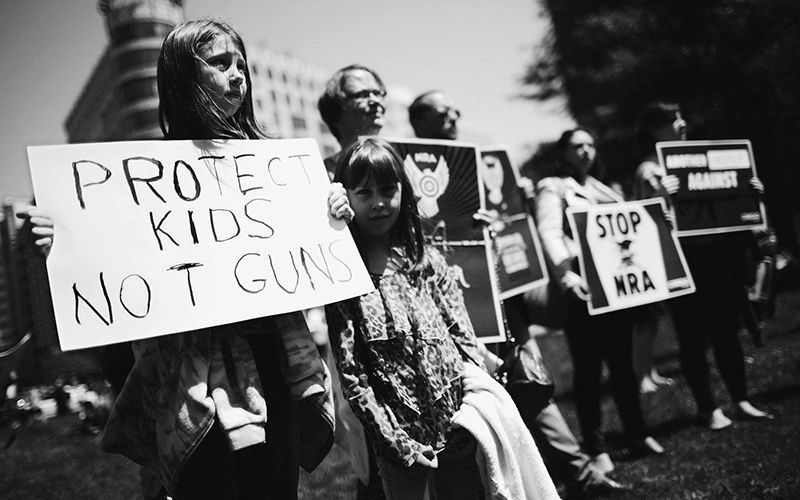With recent US headlines covered with news of school shootings, the nation’s gun policies, and the growing March for our Lives movement, it has become increasingly relevant that one must educate oneself on the issue as a whole. To many, the gun laws in the United States may seem counterintuitive, especially when considering the role of the US as such a significant model and leader in the international community. However, the statistics, precedent, and existing (or rather, non-existing) regulations targeted at the subject would indicate differently.
Throughout the years it has been noted that the US has historically always had a unique problem in regards to gun control and gun violence. “With less than 5 percent of the world’s population, has about 35–50 percent of the world’s civilian-owned guns, according to a 2007 report by the Switzerland-based Small Arms Survey.” (Lopez, 2018) Along with this high rate of gun ownership comes with a correlated level of gun violence. In just 2018 alone, for instance, the US has already seen 20 instances of school shootings. It is clear, thus, that the matter of gun control is one that begs significant attention. March for our Lives, a student-organized movement, is a prime example of citizen response toward the issue.
Another aspect of the issue one must examine is in terms of the overall American culture in regards to the possession of guns. Such is clearly echoed in the values central to the foundation of the nation—explicitly stated in the Constitution. The Second Amendment states:
“A well-regulated Militia, being necessary to the security of a free State, the right of the people to keep and bear Arms, shall not be infringed.”
It is thus, with this precedent, that power has been given to states to enforce varying gun control laws—ones that generally allow individuals to possess guns in the household.
Despite current problems, one must also recognize past attempts to curb the issue of gun violence in the US. For instance, in 2016, the Obama administration has implemented various limits on the purchase of guns—more specifically, through the use of stricter background checks. Proponents of stricter control have voiced their dissent against current policies, however, criticizing its lax nature. As of today, the US still lacks federal legislature that bans the possession of semiautomatic assault weapons; this is also an area of concern that many have protested against. Ultimately, it is believed that backgrounds checks are unlikely to affect tangible changes, especially in the short-term.
When viewing the issue, many have also pointed to the cases of other countries such as Australia, Canada, and Japan. Australia and Canada both implemented significantly stricter gun control laws in response to instances of gun violence. In Australia, such laws were enacted after “the Port Arthur massacre of April 1996, when a young man killed 35 people and wounded 23 others” (Masters, 2016). Fundamental changes such as the banning of semiautomatic weapons ensued, removing up to “650,000 assault weapons… out of public circulation” (Masters, 2016). Similarly, Canada’s policies were put into place a school shooting that occurred in 1989. The Canadian government acted by passing more stringent licensing laws as well as by banning a significant number of registered guns. On the other hand, Japan’s extremely low gun-homicide rates can be associated to its nations highly restrictive firearms laws; this has been associated with the nation’s overall ideology and policies post-World War II.
In conclusion, recent gun instances of gun violence and shootings in the United States are resulting in greater attention from civil societies and activist groups. Amidst the controversial issue of gun control, one can and should seek to obtain a more holistic view of the issue through a broader understanding of such regulations in different countries.

